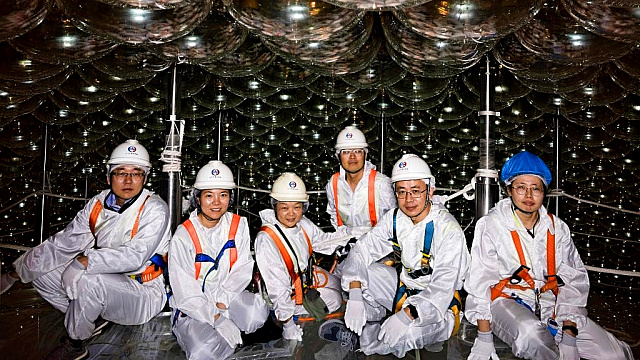
China has reached a critical milestone in constructing the world’s largest transparent spherical neutrino detector, located at the Jiangmen Underground Neutrino Observatory (JUNO) in Guangdong Province.
The facility began filling its detector pool with ultrapure water, a process that marks the final stages of preparation for this groundbreaking scientific project.
The ultrapure water, purified through an advanced filtration system, is being introduced at a rate of 100 tonnes per hour. This phase will prepare the detector for its core component, a liquid scintillator housed in an acrylic sphere with a diameter of 35.4 metres.
This sphere, supported by a 41.1-metre stainless steel mesh structure, is immersed in a 44-metre-deep cylindrical pool built within a granite hill. This is reported by
Xinhua News Agency, a partner of TV BRICS.
The JUNO detector features 20,000 large photomultiplier tubes, each measuring 20 inches, and an additional 25,000 smaller tubes of three inches. These components work in tandem with light baffles, magnetic shielding coils, and other sophisticated technologies to capture and convert scintillation light signals into electrical data.
In addition to the liquid scintillator detector, the pool functions as a water Cherenkov detector and a cosmic ray tracker. This dual-purpose design not only detects cosmic rays but also shields the detector from natural radioactivity and secondary particles originating in the surrounding rock.
JUNO’s liquid scintillator volume is 20 times greater, the photoelectron yield is three times higher, and its energy resolution has reached an unprecedented 3 per cent. The entire filling process, including replacing water inside the acrylic sphere with liquid scintillator, is expected to conclude by August 2025.
Neutrinos, often referred to as “ghost particles,” are among the least understood elementary particles. Electrically neutral and nearly massless, these particles travel at speeds close to light and rarely interact with ordinary matter.
JUNO’s primary objective is to determine the neutrino mass hierarchy, a critical step in understanding these elusive particles, the source claims.
With over 700 researchers from 17 countries and regions involved, JUNO represents a collaborative effort in global neutrino research.
Photo:
Xinhua/Jin Liwang


